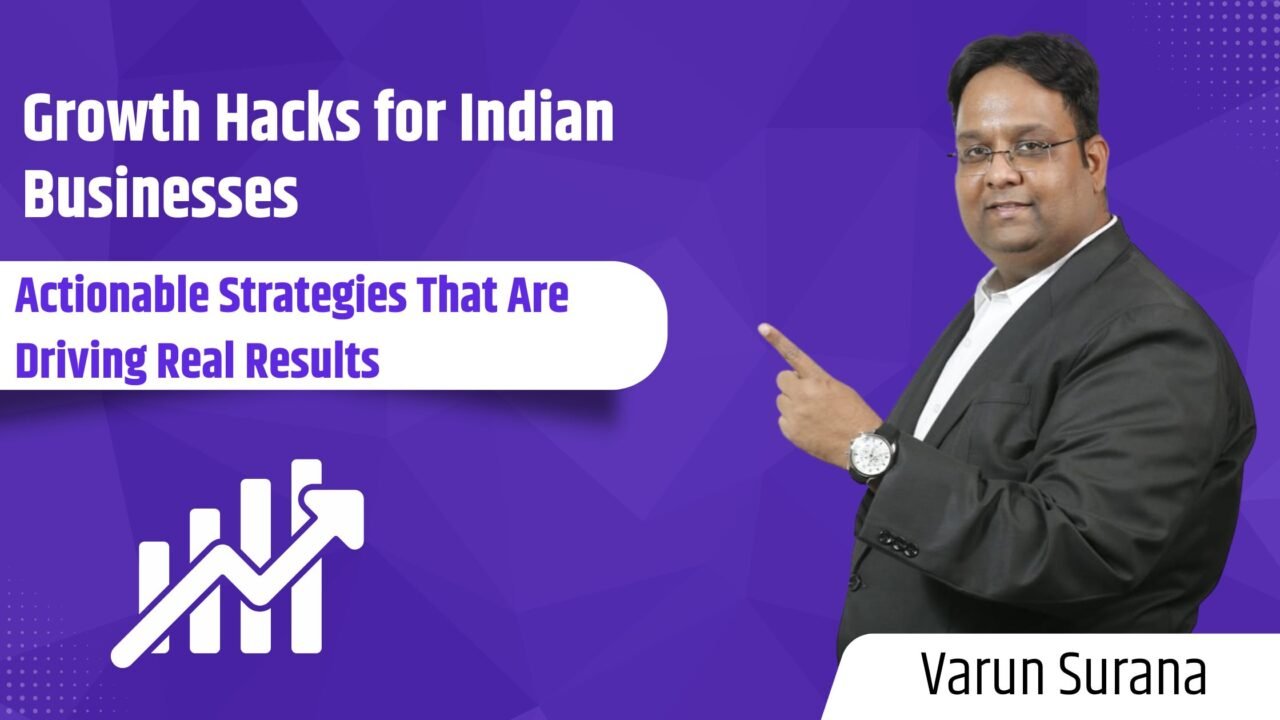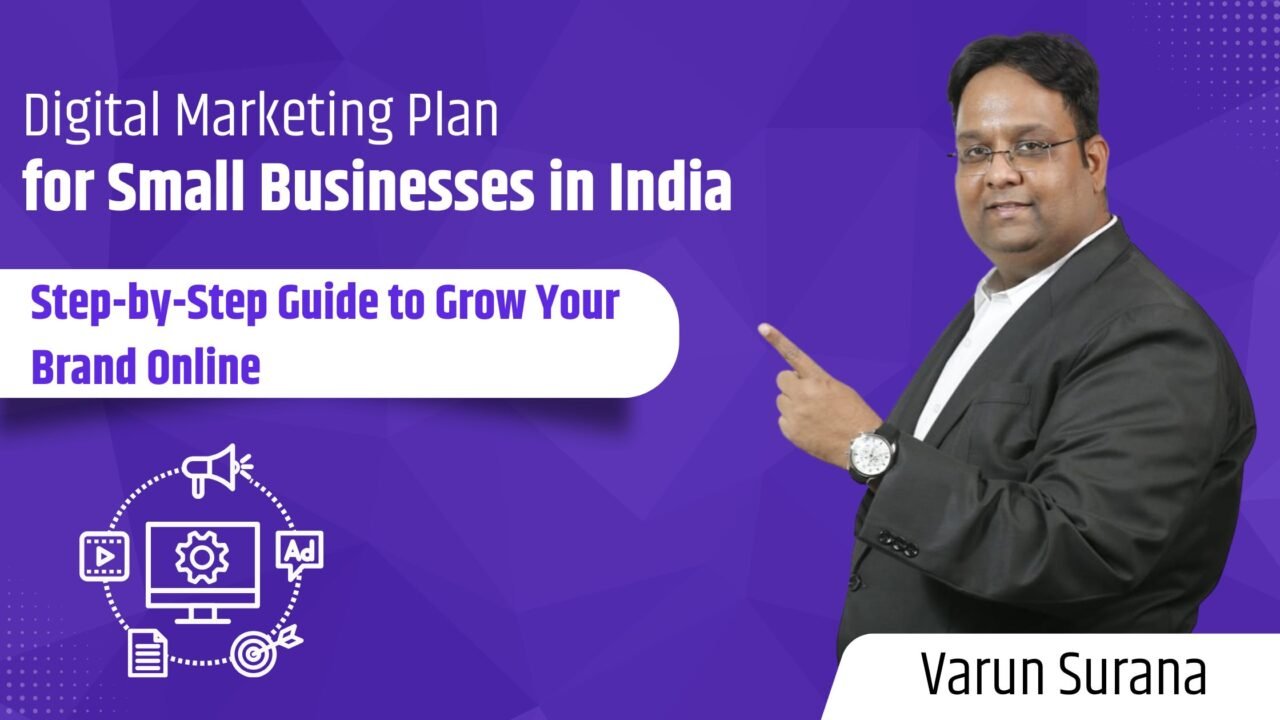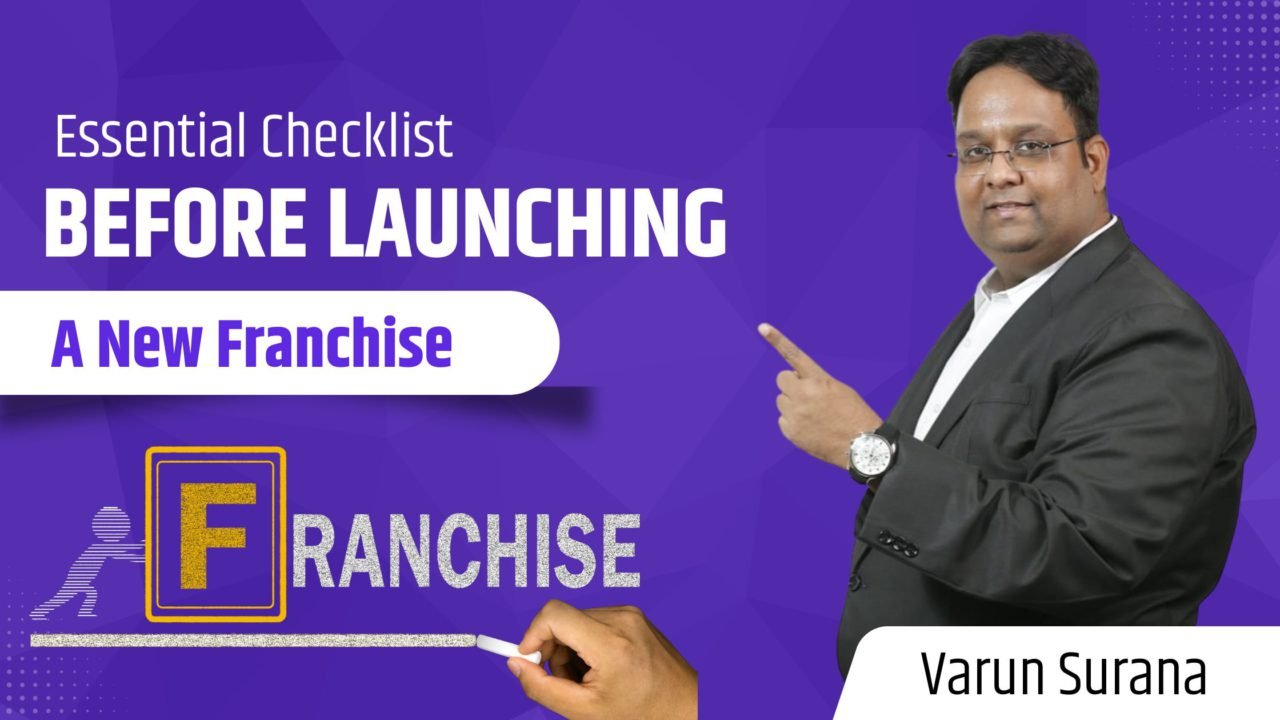Growth Hacks for Indian Businesses That Actually Work

In a country as diverse, fast-paced, and dynamic as India, the path to business growth is both challenging and full of opportunity. Whether you’re a solopreneur, a startup founder, or a small business owner, the right set of growth hacks for Indian businesses can give you a decisive edge. While traditional methods like word-of-mouth and local advertising still hold value, today’s landscape demands innovation, adaptability, and data-driven decisions. In this blog, we’ll dive into tried-and-tested business growth strategies in India that are working in 2025. Hyperlocal Targeting with Digital Ads Gone are the days when generic digital ads worked. In 2025, smart businesses are using hyperlocal Facebook and Google Ads to target specific PIN codes, landmarks, or neighborhoods. Why it works: Indian consumers trust nearby vendors Regional language ads improve CTR Cost-effective reach Growth hacks for Indian businesses should always begin with precision targeting, especially in Tier 2 and Tier 3 cities. Collaborate with Micro-Influencers Micro-influencers (1K-10K followers) have strong engagement in niche communities. In India, local influencers in fashion, food, education, or home décor can drive powerful word-of-mouth at a fraction of traditional advertising cost. Execution tips: Use barter deals (product-for-promotion) Focus on regional language content Encourage video testimonials or Instagram reels This has emerged as one of the most reliable business growth strategies in India in recent years. Leverage WhatsApp Commerce With over 500 million users in India, WhatsApp has become a sales powerhouse. Growth hack: Set up a WhatsApp Business account Create product catalogs and quick reply templates Use broadcast lists and status updates for offers Many business growth hacks 2025 revolve around making the buying process frictionless, and WhatsApp helps you do exactly that. Regional Language SEO & Content One of the most overlooked growth hacks for Indian businesses is optimizing content for local languages. Millions of Indians search in Hindi, Tamil, Bengali, Marathi, etc. How to implement: Translate key pages and blog posts Use Google’s free keyword planner with regional filters Upload YouTube videos with subtitles and voice-overs This boosts your search visibility and improves engagement with non-English speaking audiences. Turn Customers into Ambassadors Nothing beats the trust of peer recommendation. Launch referral programs and incentivize happy customers to bring in new business. Ideas: Give discounts for successful referrals Run monthly contests Feature top referrers on social media In India’s community-driven culture, this is among the most organic business growth strategies in India. Smart Use of Short-Form Video Platforms like Instagram Reels, YouTube Shorts, and Moj are perfect for Indian audiences. Create short, value-packed videos with: Tips and tutorials Customer stories Behind-the-scenes content Even B2B brands are leveraging short-form videos to build authority and trust. Strategic Offline-Online Integration Physical businesses that combine digital tools outperform their peers. Examples: Kirana stores using UPI, online ordering, and loyalty apps Clinics booking appointments via Instagram or WhatsApp Restaurants using QR menus and digital payment links This hybrid approach is one of the most underrated business growth hacks 2025. Automate Repetitive Tasks Use tools like: Zapier for workflow automation Mailchimp for email marketing Notion or Trello for team collaboration Automation frees up time for strategic planning and creative campaigns, which directly supports business scaling. Build a Learning-First Culture Train your team regularly on: Digital skills Sales psychology Customer support Offer short, frequent, and practical upskilling sessions. A skilled team will always outperform competitors. Tap into Government Schemes and Grants The Indian government continues to support MSMEs through initiatives like: Startup India MUDRA Loans PMEGP State-level innovation funds Stay updated through portals like MSME.gov.in and Startup India to reduce operational costs and get access to capital. Conclusion India is a land of possibilities, but to thrive here, you need to mix local understanding with digital agility. These growth hacks for Indian businesses are not just ideas—they’re actionable strategies tailored for the Indian mindset, market, and movement in 2025. Whether you’re in retail, services, manufacturing, or digital content, integrating these business growth strategies in India can transform your operations, branding, and profitability. Keep experimenting, stay customer-obsessed, and never stop learning. For more practical insights and workshops, follow Varun Surana—India’s go-to mentor for modern business growth. Also Read – Digital Marketing Plan for Small Businesses in India
Digital Marketing Plan for Small Businesses in India

In the ever-evolving landscape of Indian entrepreneurship, small businesses are emerging as powerful players. However, in an increasingly digital-first world, success hinges significantly on having a strong online presence. This is where a robust digital marketing plan for small business becomes a game changer. Whether you’re a home-grown brand, a local service provider, or a budding e-commerce venture, knowing how to promote small business online in India is no longer optional—it’s essential. This blog outlines a practical, actionable, and affordable digital marketing blueprint tailor-made for Indian small businesses. Understand Your Target Audience Before spending a rupee on advertising, you need to know your customer. Are you targeting local buyers, millennials, working professionals, or Tier-II city homemakers? Use tools like Google Trends, Meta Audience Insights, and simple customer surveys to identify: Age groups Buying behavior Regional language preferences Social media usage patterns This insight will influence every part of your digital marketing strategy for small business. Build a Professional Online Presence A well-designed, mobile-friendly website is your digital storefront. Make sure it includes: Clear business information Product/services details Contact form and WhatsApp integration Trust signals (testimonials, Google reviews, etc.) Use platforms like Wix, WordPress, or Shopify to create and manage your site easily. Also, get your business listed on Google My Business—an essential step in online marketing for small businesses. Leverage Local SEO Most Indian small businesses survive and thrive on local clientele. Optimize for local search using: Local keywords (“bakery in Jaipur,” “home tutor in Indore”) Google Business Profile optimization Local backlinks from city-based blogs or news outlets Customer reviews This ensures you show up when someone searches for services “near me.” Content Marketing with a Local Flavor Start a blog or a YouTube channel to offer helpful content related to your product or service. Example: A fitness studio can share diet plans or workout routines in Hindi A clothing boutique can create reels on ethnic styling tips for Indian festivals Use both English and regional languages to expand reach. This content not only engages but also builds trust and long-term brand recall. Social Media Marketing No digital marketing plan for small business is complete without a strong social media strategy: Instagram: Perfect for visual products like food, fashion, and crafts. Facebook: Great for older demographics and community engagement. WhatsApp Business: Vital for direct customer communication. LinkedIn: Useful for B2B services and personal branding. Post consistently and use regional language, hashtags, and reels to improve organic reach. Paid Advertising on a Budget You don’t need lakhs to run effective ads. Even ₹100/day can deliver good results if done right. Use Facebook and Instagram Ads for hyperlocal targeting Use Google Ads for high-intent keywords (e.g., “best cake shop in Jodhpur”) Track conversions using Meta Pixel and Google Analytics Start small, test, optimize, and scale based on performance. Email & WhatsApp Marketing Build a customer database through your website, in-store visits, or social media. Send regular emails with offers, updates, and tips Use tools like Mailchimp or ConvertKit for automation Use WhatsApp Business for updates, offers, and customer support This increases repeat purchases and builds a loyal community. Collaborate with Micro-Influencers Indian micro-influencers (1K to 10K followers) have loyal and engaged followers. Tie-up with local influencers for barter or minimal fees to: Promote your products/services Host giveaways Share user-generated content This brings authenticity and targeted visibility. Track and Measure Results The best digital marketing strategy for small business relies on data. Use free tools to track: Website traffic (Google Analytics) Social media growth and engagement (Meta Business Suite) Ad campaign ROI Optimize your campaigns every month based on this data. Continuous Learning and Adaptation Digital marketing changes fast. Stay updated by following: YouTube channels by Indian marketers Google Digital Garage (free courses) Varun Surana’s digital workshops and Instagram tips Adapt quickly to trends like AI tools, reels, or voice search for local languages. Final Thoughts A well-executed digital marketing plan for small business can be the difference between surviving and thriving. Start with the basics, build gradually, and focus on offering real value to your audience. India’s digital boom presents a golden opportunity for small business owners who are willing to adapt and grow. With consistency, creativity, and strategic efforts, your brand can make a significant online impact. Need help setting up your digital foundation? Reach out to Varun Surana’s team or enroll in one of our beginner-friendly workshops tailored for small business owners in India. Also Read – How To Scale a Small Business in India: A Comprehensive Guide
Voice Search SEO in India: How to Rank in Hindi, Tamil & Other Regional Languages

Voice Search SEO in India 2025 With over 600 million voice search users expected in India by the end of 2025, optimizing for voice + regional language SEO is no longer optional—it’s a competitive edge. As a seasoned Hindi SEO consultant and multilingual SEO expert, I’ve created this in-depth guide to help Indian businesses adapt to the voice-first revolution. 🎤 Why Voice Search Is Exploding in India India’s digital users are mobile-first and increasingly vernacular-first. Thanks to Google Assistant, Alexa, and Jio integrations: Users prefer asking questions rather than typing queries Regional language voice searches have grown over 270% year-on-year Searches like “paas mein AC repair service” or “best budget smartphone Hindi mein” are now common ✅ Result: Brands not optimized for voice and local languages are losing out on massive organic traffic. 🔍 What Makes Voice Search SEO Different? Voice SEO is: Conversational: Uses long-tail, natural language (e.g., “Which is the best SEO tool in Hindi?”) Intent-driven: Users want instant, actionable answers Localized: Based on GPS, GMB, and NAP data Mobile-first: 90%+ of voice searches happen on smartphones 🗣️ Multilingual SEO: Why It Matters in India India is not a monolingual market. Audiences in cities like Lucknow, Chennai, Surat, and Kochi consume content in: Hindi Tamil Marathi Telugu Bengali Gujarati 🎯 Targeting them in their native language builds trust, improves dwell time, and boosts conversions. Relevant Keywords: Multilingual SEO India, Voice search India, Hindi SEO consultant ✅ Step-by-Step Voice & Multilingual SEO Checklist 1. Use Long-Tail Conversational Keywords Optimize for question-based searches (e.g., “How to choose AC in Hindi?”) Use keyword tools like AnswerThePublic, AlsoAsked, and Google’s People Also Ask (PAA) 2. Create Content in Regional Languages Use native speakers or quality translators (avoid only machine translation) Start with key product pages, service pages, and FAQs Focus on high-demand languages like Hindi, Tamil, Marathi 3. Add Structured Data (Schema) Use FAQ schema to increase chances of voice snippet results Add LocalBusiness and Speakable schema (where available) Use @language in schema markup for multilingual variants 4. Claim & Optimize Google Business Profile (GMB) Add your business name in English and regional scripts (e.g., हिंदी में नाम) Encourage reviews in native language Use posts to answer common voice queries (e.g., “रविवार को खुला है क्या?”) 5. Create Voice-Friendly FAQ Pages Format questions exactly how users ask them in Hindi or Tamil Keep answers clear, concise (40–50 words), and to-the-point 6. Improve Site Speed and Mobile Experience 90% of voice queries come from mobile Ensure site loads in under 2.5 seconds Enable AMP (optional) for blog pages 7. Enable Multilingual URL and Hreflang Tags Use /hi/, /ta/, /mr/ format for multilingual content Implement hreflang correctly to avoid duplicate indexing 🧠 Pro Tip: Start With Hindi SEO First Hindi is the most widely spoken language in India. Begin with: Homepage in Hindi Top 5 product/service pages FAQs and contact us in Hindi Once indexed and performing well, expand into Tamil, Marathi, and others. 🚨 Common Mistakes in Voice & Multilingual SEO ❌ Using Google Translate without human review ❌ Ignoring schema for regional content ❌ Focusing only on written keywords (ignoring voice tone) ❌ No GMB reviews or responses in regional language 📊 Real Use Case: SEO Growth from Hindi + Voice Optimization Client: Local EdTech company in RajasthanStrategy: Created Hindi landing pages + voice-optimized FAQsResult: +186% traffic from tier-2/3 cities Featured snippet for voice keyword “best English course Hindi mein” Bounce rate dropped by 28% 📞 Want to Rank in Hindi, Tamil & More? Don’t let your brand miss out on India’s voice-first, multilingual search revolution. Whether you’re targeting tier-2 cities or regional language audiences, I can help optimize your SEO strategy for Hindi, Tamil, Marathi, and beyond. 💼 Consult a seasoned multilingual SEO expert and take the first step toward dominating regional search results. ✅ Chat on WhatsApp: 📲 +91-9783207700 ✅ Visit: www.varunsurana.in 🎯 Let’s localize your SEO, boost your visibility, and make your brand voice-search ready. Frequently Asked Questions Which Indian languages should I start SEO with? Begin with Hindi, then expand to Tamil, Marathi, Telugu, and Bengali based on your regional market. Do voice search and multilingual SEO really boost traffic? Yes. Brands targeting voice and native-language keywords have seen up to 3X more traffic from Tier-2/3 cities in India. How do I find keywords for Hindi or Tamil SEO? Use tools like Google’s PAA, Google Trends India (regional filter), Ahrefs (Indian database), and observe GMB voice queries. Can I rank a Hindi page on Google India? Absolutely. Google supports content in all Indian languages, and regional content ranks well if properly optimized.
Latest Google SEO Trends in India: (2025 Edition)

In a rapidly evolving digital landscape, understanding the latest SEO trends is no longer optional—it’s a necessity. With Google updating its algorithms more frequently than ever and the rise of AI-powered tools transforming optimization, businesses must stay ahead of the curve. As a top SEO expert, I bring you this upgraded, premium guide on the Google SEO trends in India 2025 to future-proof your digital strategy. 📈 SEO in India: From 2010 to 2025 – A Timeline Snapshot Year SEO Focus Key Changes 2010 Keyword Density Basic on-page SEO, backlinks 2015 Mobile-First Indexing Shift toward responsive design 2020 BERT + Intent Matching Google understands context better 2023 Helpful Content Update Value-first content wins 2025 AI Search + E-E-A-T Human experience, AI tools, and trustworthiness dominate India now has over 900 million internet users, and SEO is no longer just about traffic—it’s about trust, expertise, and conversions. 🚀 Top Google SEO Trends in India for 2025 1. AI-Driven Search and the Rise of Google SGE (Search Generative Experience) Google’s Search Generative Experience means users now get AI-generated summaries at the top of search pages. To adapt: Focus on content that directly answers questions. Use structured data/schema to help Google read your pages better. Include original case studies, expert views, and data-driven insights. 2. E-E-A-T (Experience, Expertise, Authority, Trust) Is the New Ranking Formula In 2025, Google rewards content that comes from real-life experience. This is especially critical for YMYL (Your Money Your Life) niches like healthcare, finance, and law. Include detailed author bios and credentials Use expert quotes, client testimonials, and project experience Get brand mentions on high-authority domains (PR, interviews, podcasts) 🎯 Mini-Case: One of our clients in legal consulting ranked in Top 3 results by adding schema, testimonials, and in-depth guides within 60 days. 3. Mobile + Voice + Multilingual SEO = Massive Traffic Boost India’s next billion users use Google via voice or regional language. To win: Create Hindi/Marathi/Tamil content variants Use long-tail conversational keywords (e.g., “Sabse accha SEO expert kaise chune?”) Add voice-optimized FAQs on top of your blogs 🎤 Example Voice Query: “SEO consultant near me in Hindi” → Result: Brands with multilingual landing pages rank better. 4. Core Web Vitals + Behavioral Signals = Stronger Rankings 2025 Google algorithms combine: Page speed, CLS (layout shift), and interactivity (Core Web Vitals) Bounce rate, scroll depth, average session time (UX Metrics) You need: Compressed images, server-side rendering Responsive mobile interface Fast-loading interactive elements 📈 Insight: Sites that passed all CWV metrics saw a 22% increase in average keyword position. 5. Topic Clusters > Standalone Blogs Don’t write random blogs. Build content silos: Main Pillar: “How SEO Helps Indian Brands Grow in 2025” Sub Topics: Local SEO, Technical SEO, AI Tools, SEO Mistakes, etc. Interlink naturally, use breadcrumbs 🧠 Bonus Tip: Use Surfer SEO or Frase to identify cluster opportunities. ⚙️ Tools Every SEO Consultant in India Must Use in 2025 Tool Category What It Does Surfer SEO Content Optimization Real-time on-page guidance Jasper AI Content Creation AI-powered SEO content RankMath Pro On-Page SEO Smart schema, auto meta Frase.io SERP Research Helps win featured snippets Screaming Frog Technical SEO Complete site audits SEMrush / Ahrefs Keyword + Backlink Keyword gap + competitor tracking 🛠️ Pro Tip: Blend AI speed with human strategy for unbeatable results. 🔄 Real Case Study: 10X Growth with AI + Topical Authority Client: Indian D2C skincare brandDuration: 6 Months (Oct 2024–Mar 2025)Strategy: Clustered content hub AI-assisted outline + human editing Added schema, social proof, and testimonial Result: Organic traffic: +1023% Keywords in Top 10: From 48 to 392 Revenue from organic: ₹14.7L → ₹1.32Cr 🎯 Your 10-Point Action Plan to Win SEO in India 2025 ✅ Redo on-page SEO with E-E-A-T focus ✅ Add FAQs & voice queries ✅ Translate key pages into Hindi + local languages ✅ Create topic clusters instead of isolated blogs ✅ Use AI SEO tools to scale research & writing ✅ Implement schema for blogs, authors, FAQs ✅ Improve CWV metrics sitewide ✅ Link your expert profiles on high DA platforms (e.g., LinkedIn, GMB, podcast bios) ✅ Publish expert-backed whitepapers or mini-courses ✅ Hire an experienced SEO consultant ✋ Final Thoughts from a Leading SEO Expert SEO in 2025 is not about shortcuts. It’s about experience + intent + smart tools. If you’re serious about growing: Your traffic Your brand Your trust on Google Then you need to evolve with SEO updates India has in store. Let’s not play catch-up. Let’s lead. 📞 Ready for an Expert SEO Audit? Stay ahead of the curve with the latest Google SEO trends in India. Let’s uncover what’s holding your website back and fix it—fast! ✅ Chat on WhatsApp: +91-9183207700 ✅ Visit: www.varunsurana.in Frequently Asked Questions What are the biggest SEO changes in 2025 for India? Google SGE, multilingual SEO, AI-assisted content, and trust-based ranking are major shifts. Should I use AI tools for SEO content? Absolutely—but combine them with real human experience to align with Google’s E-E-A-T. How does Google’s Search Generative Experience (SGE) affect SEO strategies? Google SGE delivers AI-generated summaries on top of search results, making zero-click content more dominant. SEO strategies in 2025 must focus on creating content that directly answers questions, integrates structured data, and aligns with search intent to increase visibility in AI-generated sections. Why is E-E-A-T so important for SEO rankings in India now? E-E-A-T (Experience, Expertise, Authority, Trust) is crucial because Google prioritizes trustworthy, human-authored content—especially in sensitive categories like health, finance, and law. Displaying real credentials, case studies, and third-party validation helps Google rank your pages higher. What are the best AI SEO tools to use in 2025 for Indian consultants? Tools like Surfer SEO, Jasper AI, Frase.io, and RankMath Pro are essential for creating optimized content, identifying keyword opportunities, and improving technical SEO. When used correctly, they can reduce manual work and deliver faster, smarter ranking results. How can I optimize my website for voice and multilingual search in India? To win voice and multilingual SEO, use regional languages
Essential Checklist Before Launching a New Franchise

Franchising is one of the most scalable and rewarding ways to grow a brand, especially in a business landscape like India’s—vibrant, diverse, and full of entrepreneurial ambition. Whether you’re a franchisor expanding your brand or an entrepreneur stepping into a proven business model, success lies in careful preparation. Before you invest time and capital, it’s crucial to go through a comprehensive franchise business checklist. A missed step can cost you months of effort and financial setbacks. This blog outlines the essential checklist before launching a new franchise—a practical roadmap for turning your franchise vision into a profitable reality. (If you need expert assistance in setting up your franchise business smoothly, you can explore our Franchise Consulting Services.) Define Your Franchise Model Clearly The first step in any franchise setup guide is clarity. Are you offering a single-unit franchise, multi-unit, or master franchise? What level of control will you maintain as a franchisor? Ask yourself: What part of your business will be franchised? Will franchisees have exclusive rights to territories? What is the operational structure and communication flow? A clear model makes your offering easier to understand and sell—and reduces legal or operational confusion later. Legal Framework & Documentation This is non-negotiable. You must have your legal documentation ready before approaching franchisees. The essential legal documents include: Franchise Disclosure Document (FDD) Franchise Agreement Trademark Registration and Licensing Terms Operations Manual and SOPs Territory Rights and Exclusivity Clauses Consulting a franchise law expert is highly recommended. These documents protect your brand while setting expectations for franchisees. Franchise business checklist tip: Always register your trademarks before expanding. It strengthens your position in case of disputes. Financial Planning & Investment Structure How much will it cost to start the franchise? What is the ROI timeline for a typical franchisee? These are the questions investors will ask. Prepare a financial model that includes: Initial franchise fee Setup and equipment costs Monthly royalty or revenue-sharing percentage Marketing fund contribution (if applicable) Profit margins and break-even point This part of the franchise business checklist must be backed by real data, pilot tests, or similar business benchmarks. Branding & Marketing Toolkit Your franchise is only as strong as your brand. Franchisees rely on your brand’s reputation to gain traction locally. Prepare a marketing kit that includes: Logos, brand guidelines, and visual identity Approved social media templates Flyers, posters, and signage formats Website or landing page with franchise info Case studies, testimonials, and reviews Make it easy for franchisees to market the brand consistently across geographies. This toolkit is a key part of any franchise setup guide. Operations Manual & SOPs Your operations manual is the holy book for your franchisees. It ensures standardization, quality control, and consistency. Include step-by-step guides for: Daily operations and checklists Product or service delivery processes Inventory and vendor management Customer service expectations Staff hiring, training, and management Technology and POS system usage A well-written operations manual is essential for launching a new franchise successfully—especially when scaling rapidly. Franchisee Selection Criteria Not every applicant is the right fit—even if they have the money. Define the ideal franchise partner profile. Consider: Business experience or relevant background Willingness to follow systems Cultural fit with your brand values Local market knowledge Financial capability and commitment Screen carefully. Choosing the wrong partner can damage your brand in a region and lead to early franchise closure. Training & Onboarding Programs Comprehensive training ensures that every franchise starts strong. It also builds confidence and competence among your franchisees and their teams. Key training areas: Business operations Brand guidelines and customer experience Software or POS training Marketing campaigns and lead generation Local adaptations (if applicable) Include both in-person sessions and digital resources, such as video tutorials and checklists. Add this to your franchise business checklist as a must-have. Site Selection Support Location can make or break a franchise. Offer guidance or approval protocols for site selection. Evaluate: Local foot traffic or visibility Target audience demographics Competitor presence Accessibility and parking Interior setup and design needs Consider partnering with local real estate consultants to streamline this process for franchisees. Vendor & Supply Chain Integration Ensure that your franchisees can access the same quality products or raw materials as your original outlet. Provide: Approved vendor list Negotiated prices or logistics support SOPs for inventory management Tech integration for reordering and payments If consistency is your strength, supply chain standardization is your backbone. No essential checklist before launching a new franchise is complete without this. Marketing Support for Launch When a new franchise opens, initial buzz can determine how quickly it gains momentum. Offer pre-launch and post-launch support: Digital marketing campaigns (Google, Instagram, Facebook) PR and influencer outreach Grand opening event ideas Local newspaper or radio advertising (if relevant) Referral programs or offers Your marketing team should collaborate with the new franchisee at least one month before launch. Post-Launch Monitoring & Support Once the franchise is live, regular check-ins are necessary to maintain standards and provide ongoing assistance. Set up: Monthly performance reviews Help desk or franchisee support team Quarterly training or meet-ups Surprise audits for quality control Feedback loops for improvement Your involvement post-launch shows commitment to the franchisee’s success and strengthens the brand. Scalable Technology Setup Whether it’s POS systems, CRM software, or inventory tracking—ensure your systems are scalable and franchise-ready. Use tools that offer: Centralized dashboard for all franchisees Data tracking and analytics Remote troubleshooting Access control for sensitive data Easy onboarding for new locations Include recommended tech platforms in your franchise setup guide to avoid fragmentation. Need Expert Help with Franchise Launch? If you’re feeling overwhelmed or need expert guidance to launch and scale your franchise successfully, it’s wise to get professional help. We specialize in franchise consulting—from business model development to training programs and operational support. Click here to learn more about our franchise consulting services and take the first step toward building a thriving franchise network! Final Thoughts Success in franchising comes from replicating excellence—not reinventing the wheel with every outlet. Following this essential checklist before
How Indian SMEs Can Dominate Their Niche in the Digital World

In today’s highly competitive and tech-driven business landscape, establishing a unique identity and winning customer trust is no longer optional—it’s essential. For Indian SMEs, the digital world offers an extraordinary opportunity to not only survive but thrive. But the real question is—how can Indian SMEs dominate their niche in the digital world? The digital ecosystem is vast and constantly evolving. Yet, small and medium enterprises (SMEs) in India often hesitate to make the most of it, mainly due to limited resources, lack of strategy, or awareness. This blog aims to demystify the journey and show exactly how Indian SMEs in the digital world can move from being just another name to a niche leader. 10 Proven Strategies to Help Indian SMEs Dominate Their Niche Online 1. Understand Your Niche First Before you aim to dominate, you must define your space. A niche is more than just a target market. It’s a specific segment of the market where your product or service solves a very particular problem. The narrower the niche, the stronger your potential to stand out. For example: A textile SME focusing on organic, hand-woven sarees made by tribal artisans is a niche. A logistics company specializing in same-day delivery for healthcare suppliers is a niche. Start by identifying: Who your ideal customer is What problem you solve Why your solution is better or unique When this clarity is achieved, digital strategies become focused and effective. 2. Build a Strong Online Presence A solid online presence for Indian SMEs is non-negotiable. Your digital storefront is often your first (and sometimes only) chance to impress. Here’s what SMEs must do: Professional Website: Mobile-friendly, fast-loading, and SEO-optimized Google My Business: Perfect for local visibility and reviews Social Media: Choose platforms based on where your audience hangs out (e.g., Instagram for fashion, LinkedIn for B2B) Regular Content Creation: Blogs, short videos, reels, and infographics establish authority and drive engagement Remember, consistency is key. It’s not about being everywhere—it’s about being impactful where it matters most. 3. Leverage the Power of Content Marketing In the digital age, content is your best salesperson. Whether you are a B2B manufacturing unit or a boutique fashion brand, your content defines your voice and builds your reputation. Here’s how Indian SMEs can use content to dominate: Educational blogs about your product or industry How-to videos that solve common customer problems Case studies and testimonials to build trust Behind-the-scenes stories to show authenticity A focused content strategy helps you rise above the competition and position yourself as a thought leader in your niche. 4. Invest in Paid Advertising (Smartly) Many SMEs hesitate to spend on digital ads, but the ROI can be tremendous when done right. Popular options include: Google Ads for keyword targeting Facebook & Instagram Ads for visual and emotional impact LinkedIn Ads for B2B marketing YouTube Pre-Roll Ads for brand awareness The trick is to: Start small Use retargeting Monitor performance Scale what works This allows you to reach the right people at the right time without wasting resources. 5. Embrace Data and Analytics Want to know how your business is doing online? The answer lies in the data. SMEs must track: Website traffic and behavior (via Google Analytics) Ad performance (CTR, conversions, CPC) Social media engagement (reach, likes, comments, shares) Email marketing open rates and click-throughs Use this data to: Refine content Adjust ad spend Improve customer experience Spot new opportunities Indian SMEs in the digital world must become data-driven decision-makers to stay agile and efficient. 6. Leverage E-commerce & Marketplaces Selling directly online or through marketplaces is another way SMEs can dominate their niche in the digital world. Platforms like: Amazon, Flipkart, and Meesho for physical products Shopify or WooCommerce for brand-owned stores LinkedIn, Facebook Shops, or WhatsApp Business for service promotion Offer seamless payment options, responsive customer support, and attractive packaging. Deliver value—and do it consistently. 7. Automate Wherever Possible Small teams can achieve big things—if they automate smartly. Tools to consider: Email marketing platforms like Mailchimp or Zoho Campaigns CRM systems like HubSpot or Zoho CRM Chatbots for website and WhatsApp Project management via Asana, Trello, or ClickUp Social media scheduling through Buffer or Later Automation saves time, reduces errors, and allows you to focus on strategy and creativity. 8. Focus on Customer Experience (CX) People don’t just buy products—they buy experiences. Ways to improve CX: Respond quickly to inquiries Offer clear and honest information Make feedback and reviews easy Provide post-sale support Follow up with loyalty offers Happy customers turn into brand advocates—and word-of-mouth is priceless in any niche. 9. Collaborate and Cross-Promote You don’t have to do it all alone. Partnering with complementary businesses can help expand your reach. Example: A fitness equipment brand can collaborate with fitness coaches A handmade jewellery brand can co-create with fashion bloggers Such collaborations create value, build networks, and enhance visibility at a lower cost. 10. Get Expert Help When Needed Sometimes, hiring an expert saves time, money, and missed opportunities. Whether it’s a digital marketing consultant, SEO strategist, or business mentor—a little guidance can go a long way. At Varun Surana, we help Indian entrepreneurs and SMEs build strong digital foundations, identify their niche, and create growth roadmaps that actually work. Final Thoughts How Indian SMEs can dominate their niche in the digital world isn’t a mystery—it’s a strategic mix of clarity, consistency, creativity, and commitment. By leveraging the tools available today, any small business can carve out a lasting space for itself. In a country as diverse and digitally connected as India, the time to act is now. Are you ready to rise above the noise and become a niche leader? Let’s make it happen—step by step, strategy by strategy.
Maximize ROI with Effective SEO Strategies for 2025

In today’s competitive digital landscape, SEO is no longer just about rankings—it’s about results. As someone who has been deeply immersed in the world of digital marketing, I can tell you that a well-executed SEO strategy is one of the most effective ways to drive long-term growth for your business. For 2025, the focus is on strategies that deliver measurable outcomes and help you maximize ROI with effective SEO strategies for 2025. Let me take you through the most impactful approaches to ensure your SEO efforts translate into real returns. Why ROI Matters in SEO If you’re investing time and resources into SEO, it’s only natural to expect results that go beyond vanity metrics like traffic and impressions. For me, SEO is about delivering tangible outcomes—whether it’s generating more leads, increasing sales, or lowering customer acquisition costs. That’s what I mean when I say “return on investment SEO.” When done right, SEO can be one of the most cost-effective ways to grow your business sustainably. Top SEO Strategies for 2025 to Maximize ROI 1. Prioritize User Experience (UX) and Core Web Vitals Google’s Core Web Vitals have changed the game. They measure things like page load speed, interactivity, and visual stability—essential elements of a great user experience. Why does this matter? Because a better experience means happier visitors, which leads to more conversions. My Recommendation: Ensure your website loads in under 3 seconds. Use mobile-friendly designs since Google prioritizes mobile-first indexing. Keep navigation simple and intuitive. By optimizing UX, you not only rank higher but also maximize ROI with SEO by converting more visitors into customers. 2. Leverage AI and Automation In 2025, AI isn’t just a buzzword—it’s a game-changer for SEO. Tools powered by artificial intelligence can help you analyze data faster, identify trends, and even create optimized content. Here’s How I Use AI: For smarter keyword research, tools like SEMrush or Ahrefs pinpoint high-value opportunities. AI content assistants like ChatGPT (yes, this one!) streamline the process of creating SEO-rich blogs. Automation helps track rankings and performance without manual intervention. With AI, you can work smarter, not harder, which is critical to achieving better results with fewer resources. 3. Optimize for Voice and Visual Search Have you noticed how many people now ask their smart speakers questions or use images to search online? This trend is only growing. If you want to stay ahead, your website needs to cater to these behaviors. What You Can Do: Use conversational keywords like “how to” or “what is” to capture voice search traffic. Optimize your images with detailed alt tags and structured data for better visibility in visual searches. Answer common questions directly on your site to appear in voice results. Adapting to these trends ensures your business remains visible, contributing to how you maximize ROI with effective SEO strategies for 2025. 4. Focus on High-Quality, Relevant Content Let’s be honest—content is still the backbone of SEO. But in 2025, it’s all about creating content that resonates with your audience while demonstrating authority. Google’s EEAT (Experience, Expertise, Authoritativeness, Trustworthiness) guidelines are more important than ever. My Content Advice: Write for people first, search engines second. Use primary and secondary keywords naturally—don’t overdo it. Provide actionable insights that your audience can immediately apply. When you focus on creating value, your content not only ranks better but also drives meaningful engagement, which helps you maximize ROI with SEO. 5. Don’t Ignore Local SEO If you’re running a business that serves local customers, local SEO is an absolute must. Optimizing your online presence for local search helps you connect with customers ready to take action. Here’s What I Recommend: Claim your Google Business Profile and keep it updated. Use location-based keywords in your content and meta tags. Encourage happy customers to leave positive reviews—it makes a big difference. Local SEO is one of the fastest ways to see results, especially if you’re targeting a specific region or city. 6. Optimize for Zero-Click Searches Zero-click searches are those results where users find the information they need without clicking through to a website. Think of featured snippets or the “People Also Ask” section. While this might sound like a missed opportunity, it’s actually a chance to build authority. How I Approach This: Use structured data to help Google pull your content into featured snippets. Format content with clear headings, lists, and tables for easy readability. Even if users don’t click through, appearing in these results boosts your brand’s credibility and visibility. 7. Track and Measure What Matters To ensure you’re maximizing your SEO ROI, you need to track metrics that align with your business goals. For me, the focus is always on metrics that tie back to real outcomes. The Metrics to Watch: Organic traffic growth. Conversion rates from SEO-driven traffic. Revenue or leads generated from organic search. Using tools like Google Analytics and Search Console, you can refine your strategy based on what’s working. Why You Need to Invest in SEO in 2025 SEO isn’t a one-time effort—it’s a long-term strategy. But if you do it right, the returns are exponential. In 2025, businesses that prioritize SEO will have a competitive edge, whether it’s by capturing new audiences, driving higher engagement, or reducing paid ad spend. By implementing the strategies I’ve outlined here, you can ensure your efforts translate into real results and maximize ROI with effective SEO strategies for 2025. And if you need expert advice, don’t hesitate to check out the SEO consultant to gain a strategic advantage. Final Thoughts SEO is more than just a marketing tactic—it’s an investment in the future of your business. By staying ahead of trends, focusing on user experience, and leveraging new technologies, you can ensure your SEO efforts deliver measurable results. If you’re ready to take your SEO to the next level, let’s connect. With the right approach, you can unlock new growth opportunities and dominate the search rankings in 2025. Also Read: The Role of SEO in Scaling
The Role of SEO in Scaling Indian Startups Globally

Indian startups are making waves on the global stage, from tech unicorns to D2C brands disrupting markets worldwide. Yet, in the highly competitive digital era, having a great product or service isn’t enough. Visibility is the key to success, and this is where SEO (Search Engine Optimization) plays a transformative role. In this blog, I’ll walk you through the role of SEO in scaling Indian startups globally, highlighting how search engine strategies help businesses go beyond borders, compete with global players, and achieve sustainable growth. Why SEO Matters for Indian Startups For startups, every rupee counts. While paid advertising can yield quick results, it often requires deep pockets. SEO, on the other hand, provides a cost-effective, long-term solution to drive organic traffic, build credibility, and generate leads. Indian startups, especially those venturing into global markets, need SEO to: Gain visibility in international search results. Build trust and authority in new regions. Compete with well-established players. The role of SEO in scaling Indian startups globally is about leveling the playing field, allowing a small team in Bengaluru or Jaipur to compete with a Silicon Valley giant. How SEO Helps Indian Startups Scale Globally 1. Targeting the Right Audience with Keyword Research SEO begins with understanding your audience and the keywords they use to search for solutions. For Indian startups looking to expand globally, keyword research must focus on: Localized Keywords: Tailor content to the language, preferences, and needs of specific markets. For instance, an edtech startup targeting U.S. students might prioritize “online SAT preparation,” while the same startup targeting Europe might focus on “affordable study platforms.” Search Intent: Go beyond keywords and understand what users are looking for. Are they seeking product comparisons, reviews, or quick solutions? Align your content to answer their intent. By refining keyword strategies, startups ensure they’re speaking the language of their potential customers, a critical factor in scaling businesses globally. 2. Building a Robust Digital Presence with Content “Content is the backbone of any successful SEO strategy,” and for Indian startups, it’s the best way to showcase expertise and build trust in new markets. Blog Content: Answer questions your target audience has. For instance, a fintech startup could publish blogs like “How to Save for Retirement in the U.S.” or “The Best Tools for Expense Tracking in Europe.” Thought Leadership: Share insights and case studies to position your brand as an industry authority. A SaaS startup could share how their software helped a U.S. client streamline operations, building credibility among global audiences. Creating content tailored to your audience helps Indian startups SEO strategies achieve better results, fostering trust and engagement. 3. Optimizing for International Markets Global expansion requires international SEO, which involves optimizing websites for different countries and languages. Here’s how: Hreflang Tags: Indicate the language and region for each webpage so search engines serve the right version to users. Localized Content: Don’t just translate—localize. Consider cultural nuances, regional trends, and preferences when creating content for global markets. Geo-Specific Domains: Use country-specific domains like .co.uk for the UK or .de for Germany, boosting your visibility in those regions. With international SEO, Indian startups can seamlessly adapt to different markets, driving relevance and visibility. 4. Leveraging Technical SEO for Scalability When expanding globally, a technically sound website is essential. From page speed to mobile optimization, here’s what startups should focus on: Fast Load Times: Users (and search engines) love fast websites. Compress images, use a CDN, and minimize code to improve speed. Mobile-First Design: With mobile searches dominating globally, ensure your site is optimized for smaller screens. Structured Data Markup: Help search engines understand your content better, increasing the chances of appearing in rich snippets. Technical SEO ensures a seamless user experience, which is crucial for building trust and converting global visitors into customers. 5. Building Credibility Through Backlinks Backlinks—links from other websites to yours—remain one of the most significant ranking factors in SEO. For Indian startups, earning backlinks from reputable global sites signals credibility to search engines. Strategies to Build Backlinks: Publish guest posts on relevant industry blogs. Collaborate with influencers or partners in your target regions. Share unique data, reports, or case studies that other sites will want to link to. Backlinks not only improve search rankings but also drive referral traffic, making them an indispensable part of SEO for startups looking to scale globally. 6. Using Data-Driven Insights for Continuous Improvement SEO isn’t a one-time effort; it’s an ongoing process. Regularly analyze performance to identify what’s working and what needs tweaking. Tools to Use: Google Analytics for tracking traffic and conversions. Ahrefs or SEMrush for keyword and backlink analysis. Search Console for identifying indexing issues or ranking drops. Data-driven decisions allow startups to fine-tune their strategies, ensuring maximum ROI and sustained growth in global markets. Case Study: Indian Startups Going Global with SEO Let’s take Zomato, one of India’s most successful food-tech startups, as an example. Zomato’s global expansion was heavily supported by its SEO strategy, which focused on localized content and user engagement. Key SEO Tactics Zomato Used: Localized SEO: Zomato optimized its website for different countries by targeting region-specific keywords like “best restaurants in Dubai” or “top-rated sushi in London.” This ensured visibility for global users searching for dining options in their areas. Content Marketing: Their blog provided valuable resources, from food trends to dining guides, tailored to audiences in each market. Backlink Building: Zomato collaborated with food bloggers and industry influencers worldwide, earning high-quality backlinks and enhancing its domain authority. Where Zomato Operates: Zomato successfully scaled its operations to over 24 countries, including UAE, Australia, New Zealand, the UK, Canada, South Africa, Portugal, Qatar, Turkey, and more. By tailoring its SEO strategies to each region, Zomato achieved global visibility while retaining its Indian identity. The Results: Zomato grew from being an Indian app to a global food discovery platform. Their success underscores the role of SEO in scaling Indian startups globally, proving that well-executed strategies can drive international visibility and growth. Why SEO is Essential for Indian Startups in 2025
MSME Schemes and Grants: Unlocking Opportunities for Your Business

Micro, Small, and Medium Enterprises (MSMEs) are the backbone of India’s economy, contributing significantly to employment generation, exports, and overall economic development. Recognizing their importance, the government offers various MSME schemes and grants to support and empower these businesses. If you are an MSME owner or planning to start a small business, understanding these schemes can help you unlock significant opportunities. In this blog, we’ll explore the most beneficial Government schemes for MSMEs, their advantages, and how they can provide the much-needed financial and operational boost to your business. Why Are MSME Schemes Important? India’s government is committed to strengthening the MSME sector through financial support for MSMEs and policy measures. These schemes aim to: Provide funding and financial relief. Promote technological upgradation. Enhance market competitiveness. Ensure access to global markets. Key MSME Schemes and Grants 1. Prime Minister’s Employment Generation Programme (PMEGP) Objective: Generate self-employment opportunities through the establishment of micro-enterprises. Benefits: Subsidized loans for starting new businesses. Financial assistance of up to ₹25 lakhs for manufacturing units and ₹10 lakhs for service units. Eligibility: Entrepreneurs above 18 years of age; new units only. 2. Credit Guarantee Fund Scheme for Micro and Small Enterprises (CGTMSE) Objective: Provide collateral-free loans to MSMEs. Benefits: Loans up to ₹2 crores. Encourages financial institutions to lend to small businesses. Eligibility: New and existing MSMEs involved in manufacturing or service activities. 3. Technology Upgradation Fund Scheme (TUFS) Objective: Promote the modernization of MSMEs. Benefits: Subsidies on the purchase of machinery and technology. Interest reimbursement of up to 5%. Eligibility: MSMEs upgrading their technology. 4. MSME Market Development Assistance Scheme Objective: Help MSMEs explore domestic and international markets. Benefits: Financial aid for trade fairs and exhibitions. Reimbursement of marketing expenses. Eligibility: Registered MSMEs with a proven track record. 5. SIDBI Make in India Soft Loan Fund for MSMEs (SMILE) Objective: Support small businesses under the Make in India initiative. Benefits: Quicker access to loans. Lower interest rates. Flexible repayment options. Eligibility: New and existing MSMEs in priority sectors. Financial Support for MSMEs Understanding MSME funding options is critical for business growth. These include: 1. Subsidized Loans MSME owners can avail themselves of subsidized loans through government tie-ups with banks. For instance, the Mudra Yojana offers collateral-free loans for up to ₹10 lakhs to micro and small enterprises. 2. Capital Subsidy Certain schemes, like the CLCSS (Credit Linked Capital Subsidy Scheme), provide capital subsidies for technological upgrades. This helps MSMEs adopt new-age machinery without bearing the entire financial burden. 3. Export Incentives To encourage MSMEs to explore global markets, the government provides export incentives through the India Brand Equity Foundation (IBEF) and Export Promotion Councils. Benefits of MSME Schemes Opting for MSME schemes offers multifaceted advantages: 1. Improved Financial Access Grants and loans make it easier to secure working capital and operational funds. 2. Enhanced Competitiveness Schemes like TUFS empower MSMEs with better technology, improving productivity and quality. 3. Market Access Participation in trade fairs and reimbursement schemes ensure wider exposure to potential customers and international markets. 4. Reduced Operational Costs Subsidies and incentives cut down costs, increasing profitability. 5. Skill Development Many schemes, like the Skill India Initiative, focus on training entrepreneurs and employees to improve operational efficiency. How to Avail MSME Schemes 1. Register as an MSME To access these opportunities, businesses must be registered under the Udyam Registration Portal. This provides an MSME certificate that is mandatory for applying to most schemes. 2. Identify Relevant Schemes Not all schemes are suitable for every business. Evaluate your business needs and choose schemes that align with your growth objectives. 3. Prepare Documentation Most schemes require detailed documentation, including financial statements, business plans, and proof of MSME registration. 4. Apply Through Official Channels Applications must be submitted through official portals like: Ministry of MSME website SIDBI portal Banks and financial institutions tied to specific schemes Exploring MSME Opportunities with Varun Surana Navigating the complex world of MSME schemes can be challenging. With years of expertise in business consultancy, Varun Surana specializes in helping MSMEs unlock their full potential by leveraging government schemes and grants. Why Choose Varun Surana? 1. Personalized Guidance Tailored solutions based on your business requirements. 2. End-to-End Support Assistance with registration, documentation, and application processes for MSME funding options. 3. Strategic Growth Planning Holistic advice on how to maximize the benefits of MSME schemes and grow sustainably. Conclusion MSME schemes and grants are powerful tools to fuel the growth of your business. From financial aid to market access, these opportunities can transform challenges into stepping stones for success. Whether you’re seeking financial support for MSMEs or exploring MSME opportunities, understanding and utilizing these government schemes is the key to unlocking your business’s potential. For expert guidance on MSME schemes, connect with Varun Surana today. Let’s work together to make your entrepreneurial dreams a reality! Also Read: Essential Financial Planning Tips to Build a Strong Foundation for MSMEs Follow us on Instagram: @varunsurana
How to Grow Your MSME with Limited Resources

Micro, Small, and Medium Enterprises (MSMEs) play a critical role in driving the Indian economy. However, one of the most common challenges faced by these businesses is the limitation of resources—be it financial, human, or technological. The good news is that with the right strategies, the growth of MSME businesses is achievable, even with limited resources. This blog will explore practical and actionable MSME growth strategies, helping you maximize your potential while managing constraints effectively. Challenges Faced by MSMEs Before diving into growth strategies, it’s essential to understand the obstacles that hinder MSME growth: Limited Access to Finance Difficulty in obtaining loans or grants. Lack of Skilled Workforce Smaller businesses often operate with fewer employees, limiting operational efficiency. Technological Gaps Inability to invest in advanced tools and technology due to high costs. Market Competition Struggling to compete with larger businesses offering similar products or services. Addressing these challenges is key to unlocking small business growth ideas that are sustainable and practical. Top Strategies for MSME Growth with Limited Resources 1. Optimize Resource Utilization Efficient use of available resources is crucial to the growth of MSME businesses. Prioritize Tasks: Focus on high-impact tasks that directly contribute to revenue or operational improvement. Leverage Existing Workforce: Upskill your employees through free or low-cost training programs. Platforms like Skill India offer excellent opportunities for skill enhancement. 2. Adopt Affordable Technology Technology is no longer a luxury but a necessity for MSMEs aiming to boost efficiency and reduce costs. Cloud-Based Solutions: Use affordable tools like Google Workspace for collaboration or Zoho for customer management. Digital Marketing: Harness the power of social media platforms like Instagram, Facebook, and LinkedIn to promote your business at minimal cost. E-commerce Platforms: List your products on marketplaces like Amazon, Flipkart, or niche platforms to increase visibility. 3. Leverage Government Support The government offers numerous schemes and subsidies to facilitate the growth of MSMEs. Credit Support: Utilize the Credit Guarantee Fund Scheme for Micro and Small Enterprises (CGTMSE) for collateral-free loans. Market Assistance: Participate in exhibitions and trade fairs under the MSME Market Development Assistance Scheme to showcase your products. Skill Development Programs: Enroll employees in government-sponsored training programs to enhance productivity. 4. Build Strategic Partnerships Collaborations and partnerships can help MSMEs share resources, expertise, and networks. Co-Working Spaces: Share office or manufacturing space with similar businesses to cut costs. Supply Chain Collaborations: Partner with suppliers or logistics providers for discounts and better terms. Industry Alliances: Join local business associations or chambers of commerce to gain insights and networking opportunities. 5. Focus on Customer Retention Acquiring new customers is more expensive than retaining existing ones. Loyalty Programs: Offer discounts, rewards, or exclusive deals to your loyal customers. Personalized Communication: Use email marketing to send personalized updates, offers, and reminders. Exceptional Customer Service: A satisfied customer is more likely to refer your business to others, aiding MSME growth. 6. Embrace Lean Operations Lean principles emphasize maximizing value while minimizing waste. Inventory Management: Avoid overstocking by forecasting demand accurately. Outsourcing: Delegate non-core tasks like accounting or digital marketing to freelancers or agencies. Automation: Use affordable software for repetitive tasks like invoicing and data entry to save time and reduce errors. 7. Explore Alternative Funding Options Funding remains a critical element for MSME growth strategies. When traditional funding is hard to come by, consider: Crowdfunding: Platforms like Ketto or Milaap allow you to raise funds from the public. Angel Investors: Approach investors interested in funding small businesses with growth potential. Government Grants: Apply for MSME-specific grants such as the Technology Upgradation Fund Scheme (TUFS). 8. Leverage Data for Decision Making Data-driven decision-making can significantly boost MSME performance. Customer Insights: Analyze customer feedback and purchasing patterns to tailor products and services. Market Trends: Use tools like Google Trends or industry reports to stay ahead of market demands. Performance Metrics: Track key metrics such as sales, expenses, and profit margins to identify areas for improvement. 9. Innovate Constantly Innovation doesn’t always require a big budget. Product Differentiation: Find unique selling points (USPs) that set your product apart from competitors. Service Innovation: Add value through after-sales service, quick delivery, or customized solutions. Process Innovation: Simplify workflows to save time and reduce costs. 10. Engage with the Local Community Building a strong local presence can lead to organic growth. Community Events: Participate in local fairs or sponsor community initiatives. Word-of-Mouth Marketing: Encourage satisfied customers to refer your business. Local SEO: Optimize your Google My Business profile to attract nearby customers searching for your products or services. Why Your Should Hire Varun Surana As Your SME Business Consultant for Growth Guidance? Growing your MSME requires not only strategic planning but also expert guidance. Varun Surana, a leading business consultant, specializes in helping small businesses achieve their goals by offering tailored solutions for managing limited resources effectively. What Varun Surana Offers: Customized Strategies Unique growth plans based on your business’s strengths and challenges. Resource Optimization Advice on making the most of your existing financial and operational resources. End-to-End Support Guidance on applying for government schemes, building partnerships, and leveraging technology. Conclusion The growth of MSME businesses is not solely dependent on the resources they possess but on how effectively those resources are utilized. With a combination of innovative thinking, strategic planning, and leveraging available opportunities, you can boost your MSME to new heights. For expert advice on MSME growth strategies, contact Varun Surana today and take the first step toward unlocking your business’s true potential. Also Read: Top 10 Business Growth Strategies for SMEs and MSMEs Sectors Follow us on Instagram: @varunsurana
